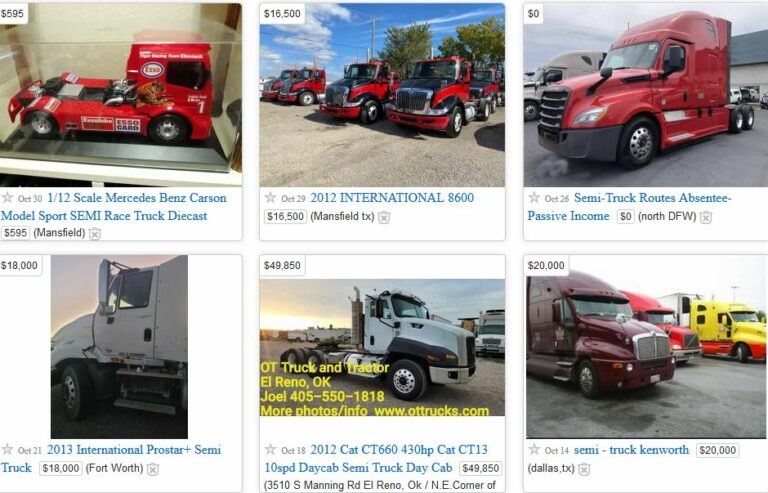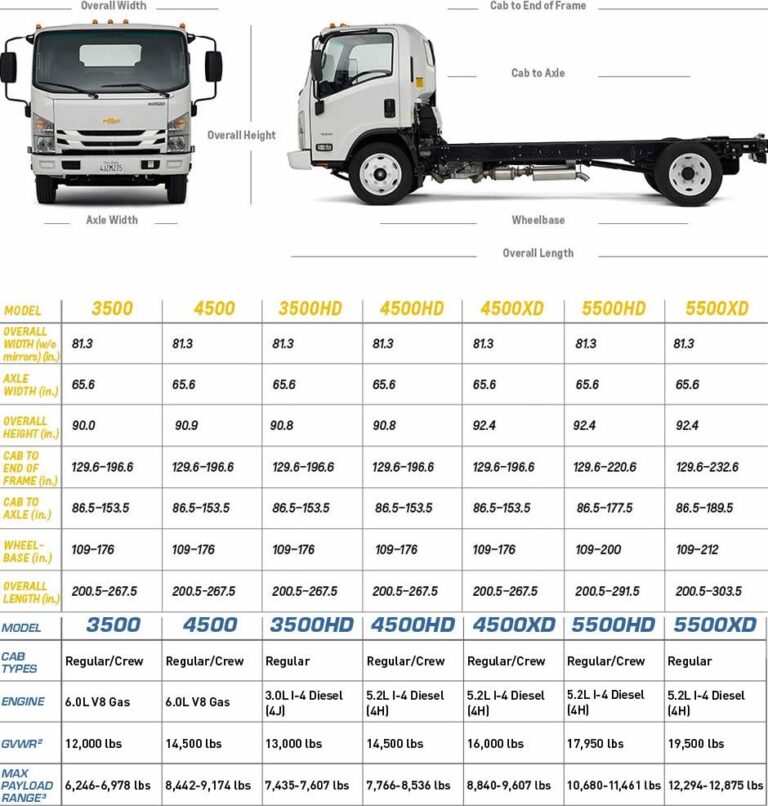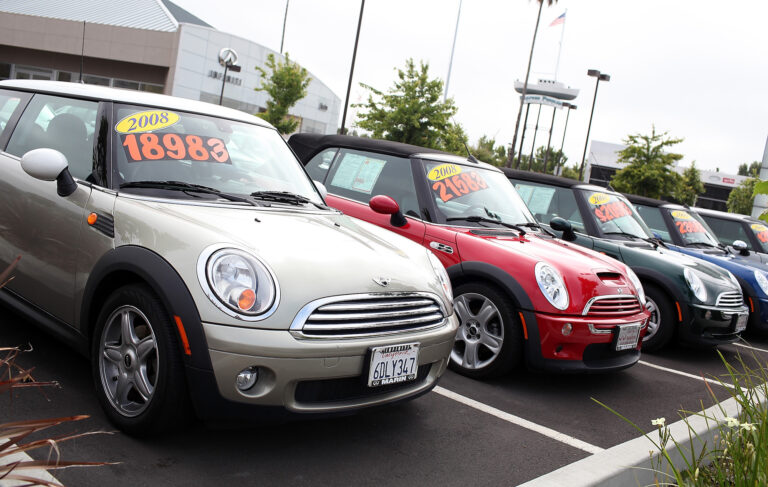80s Chevy Trucks For Sale: Your Ultimate Guide to Finding and Owning an American Icon
80s Chevy Trucks For Sale: Your Ultimate Guide to Finding and Owning an American Icon cars.truckstrend.com
The roar of a V8, the unmistakable square lines, and a legacy of rugged dependability – these are the hallmarks of 80s Chevy trucks. More than just vehicles, they are rolling pieces of American history, embodying an era of no-nonsense utility, classic style, and mechanical simplicity. From the iconic C/K series "Square Body" to the versatile S-10, the adventurous K5 Blazer, and the family-hauling Suburban, these trucks have cemented their place in automotive lore. Today, the demand for 80s Chevy trucks for sale is soaring, driven by nostalgia, a vibrant aftermarket, and a desire for a vehicle that stands out from the crowd. Whether you’re a seasoned collector, a first-time classic buyer, or a DIY enthusiast looking for your next project, understanding the nuances of these machines is key to making a wise investment. This comprehensive guide will navigate you through the journey of finding, evaluating, and owning your dream 80s Chevy truck.
The Enduring Appeal of the Square Body: The C/K Series (1981-1987/1991)
80s Chevy Trucks For Sale: Your Ultimate Guide to Finding and Owning an American Icon
When people talk about 80s Chevy trucks, the C/K series, often affectionately known as the "Square Body," is usually the first image that comes to mind. While the Square Body design itself debuted in 1973, the 1980s saw its final, refined iterations before the introduction of the GMT400 platform. The 1981-1987 models represent the core of the 80s Square Body era, with minor cosmetic updates and mechanical improvements. The C/K designations refer to 2WD (C) and 4WD (K) respectively, followed by 10 (half-ton), 20 (three-quarter-ton), or 30 (one-ton) for their payload capacity.
Why the Square Body endures:
- Timeless Aesthetics: Its clean, angular lines are instantly recognizable and have aged gracefully, making them a favorite for restomods and purist restorations alike.
- Mechanical Simplicity: These trucks were built with straightforward, robust components, making them relatively easy to work on for the average enthusiast. Parts are abundant and affordable.
- Durability: Designed for hard work, their sturdy frames and powertrains are known for impressive longevity when properly maintained.
- Versatility: Available in numerous configurations – short bed, long bed, regular cab, extended cab (crew cab), dually – there’s a Square Body for almost any need, from street cruiser to heavy hauler.
- Engine Options: Common engines included the reliable small-block 305 and 350 cubic-inch V8s, the torquey big-block 454 V8, and the surprisingly efficient 6.2-liter Detroit Diesel V8.

Beyond the C/K: S-10, Blazer, and Suburban
While the Square Body dominated the full-size market, Chevy offered other compelling truck options in the 1980s that also hold significant appeal today.
- Chevy S-10 (1982-1993): Chevrolet’s first compact pickup, the S-10 offered a more fuel-efficient and nimble alternative to its full-size siblings. It quickly became popular for its versatility, ease of parking, and lower operating costs. S-10s are excellent candidates for daily drivers, light customization, or even performance builds with engine swaps.
- K5 Blazer (1969-1991): The full-size K5 Blazer is an iconic SUV, especially the 1980s models with their removable hardtops (until 1991, when the top became fixed). Known for its off-road prowess, spacious interior, and distinctive two-door design, the K5 Blazer is a highly sought-after classic for adventurers and those seeking a unique utility vehicle.
- Suburban (1973-1991): The original SUV, the 80s Suburban, particularly the Square Body generation, offered unmatched passenger and cargo capacity. Ideal for large families, towing, or as a base for overland builds, the Suburban combines the ruggedness of a pickup with the enclosed comfort of an SUV.

What to Look For When Buying 80s Chevy Trucks For Sale
Purchasing a vintage vehicle requires a keen eye and a methodical approach. Here’s a checklist of critical areas to inspect:

-
Rust: This is the primary enemy of any older vehicle. Common rust spots on 80s Chevys include:
- Cab Corners and Rocker Panels: Look inside the door jambs and along the lower edge of the cab.
- Fenders and Wheel Wells: Especially the rear wheel wells.
- Bed Floor and Supports: Check underneath the bed for compromised crossmembers.
- Frame Rails: Inspect the entire frame for excessive surface rust, pitting, or repairs.
- Inner Fenders and Radiator Support: Often overlooked but crucial.
-
Engine and Drivetrain:
- Fluid Leaks: Check for oil, transmission, power steering, and coolant leaks.
- Smoke: Blue smoke indicates oil burning, black smoke unburnt fuel, white smoke coolant.
- Sounds: Listen for knocks, ticks, or unusual noises.
- Transmission: Ensure smooth shifts (automatic) or no grinding (manual). Check for slipping.
- 4WD System: If applicable, engage 4WD (high and low) to ensure it works correctly.
-
Interior Condition:
- Dashpad: Cracks are common due to sun exposure.
- Seats: Check for rips, tears, and foam integrity.
- Headliner: Sagging or missing headliners are typical.
- Gauges and Electronics: Test all lights, wipers, horn, radio, and HVAC controls.
- Window Seals: Look for dried out or cracked seals that can lead to leaks.
-
Suspension and Steering:
- Shocks and Springs: Look for leaks or sagging.
- Ball Joints and Tie Rod Ends: Check for excessive play.
- Steering Box: Look for leaks or excessive steering wheel play.
-
Documentation: Always request the title, service records, and any receipts for significant repairs or upgrades. A clear title is non-negotiable.
Decoding the Price Tag: Factors Influencing Value
The price of an 80s Chevy truck for sale can vary wildly, from a few thousand dollars for a project to tens of thousands for a fully restored or restomodded example. Key factors include:
- Condition: This is the single biggest determinant. A truck in concours (show) condition will command a premium over a daily driver or a parts truck.
- Model and Rarity: While C10s are abundant, specific configurations (e.g., short bed, 4×4, specific trim levels like Silverado, Scottsdale, Cheyenne) or engines can increase value. Blazers and Suburbans generally command higher prices than comparable pickups.
- Originality vs. Customization: A well-preserved original truck can be highly desirable, but a professional, tasteful restomod with modern upgrades (e.g., LS swap, air ride) can also fetch top dollar. Poorly executed modifications, however, can detract from value.
- Engine/Transmission: Desirable engine/transmission combos (e.g., 350 V8 with an automatic overdrive transmission like the 700R4, or a 454 big block) are more sought after.
- Location: Prices can vary regionally based on demand and climate (less rust in dry climates).
Where to Find Your Dream 80s Chevy Truck
The market for 80s Chevy trucks for sale is robust, offering several avenues for finding your perfect ride:
- Online Marketplaces: Craigslist, Facebook Marketplace, and eBay Motors are great starting points, offering a wide range of conditions and prices. Be wary of scams and always inspect in person.
- Classic Car/Truck Specific Websites: Sites like Hemmings, ClassicCars.com, Bring a Trailer, and specialty forums often list higher-quality or more unique examples.
- Auctions: Major auctions (Mecum, Barrett-Jackson) can feature high-end restored trucks, while local estate or auto auctions might uncover hidden gems.
- Specialty Dealerships: Dealers specializing in classic trucks often have inventory that has been inspected and, in some cases, reconditioned.
- Word of Mouth & Local Classifieds: Don’t underestimate the power of local connections or old-school classifieds for finding unlisted treasures.
Tips for a Successful Purchase
- Set a Realistic Budget: Beyond the purchase price, factor in potential restoration costs, insurance, and ongoing maintenance.
- Do Your Research: Understand common issues for the specific model you’re interested in. Learn about trim levels, engine options, and their respective pros and cons.
- Inspect Thoroughly (or Hire a Pro): If you’re not mechanically inclined, pay for a pre-purchase inspection by a trusted mechanic specializing in vintage vehicles.
- Test Drive: Listen for unusual noises, check the brakes, steering, and transmission. Ensure all gears engage smoothly.
- Negotiate: Most prices are negotiable, especially for private sellers. Be prepared to walk away if the deal isn’t right.
- Consider Insurance: Look into classic car insurance providers (e.g., Hagerty, Grundy) as they often offer better rates and agreed-value policies for vintage vehicles.
- Factor in Hidden Costs: Even a "turn-key" truck may need minor repairs, fluid changes, or tire replacement.
Common Upgrades and Customization
One of the joys of owning an 80s Chevy truck is the vast aftermarket support. Owners frequently upgrade their trucks to enhance performance, comfort, or aesthetics:
- LS Swaps: Replacing the original engine with a modern LS-series V8 from a newer GM vehicle is incredibly popular for significant power, reliability, and fuel economy gains.
- Suspension Modifications: Lowering kits for a street-performance stance or lift kits for off-road capability are common. Air ride suspension offers adjustability and a smooth ride.
- Brake Upgrades: Swapping to disc brakes (if not already present) or upgrading to larger discs and calipers greatly improves stopping power.
- Wheel and Tire Upgrades: A simple change of wheels and tires can dramatically alter the truck’s appearance.
- Interior Modernization: Adding modern air conditioning, upgraded sound systems, new seating, or digital gauges can enhance comfort and daily usability.
Price Guide: 80s Chevy Trucks For Sale
This table provides a general price range for 80s Chevy trucks based on condition. Prices can vary significantly based on specific model year, engine, options, location, and market demand. All prices are in USD.
| Model | Condition: Project (Needs extensive work, not running) | Condition: Driver (Runs, drives, needs TLC, good base) | Condition: Restored/Show (Excellent, turn-key, few flaws) |
|---|---|---|---|
| C10 (2WD) | $3,000 – $8,000 | $8,000 – $20,000 | $25,000 – $60,000+ |
| K10 (4WD) | $4,000 – $10,000 | $10,000 – $25,000 | $30,000 – $70,000+ |
| K5 Blazer (4WD) | $5,000 – $12,000 | $15,000 – $35,000 | $40,000 – $85,000+ |
| S-10 (2WD/4WD) | $1,500 – $5,000 | $4,000 – $12,000 | $15,000 – $35,000+ |
| Suburban (2WD/4WD) | $3,000 – $8,000 | $8,000 – $20,000 | $25,000 – $55,000+ |
Note: "Project" typically means running, but requires significant body, interior, or mechanical work. Non-running projects can be significantly cheaper. "Restored/Show" includes high-quality restomods.
Frequently Asked Questions (FAQ) about 80s Chevy Trucks
Q: Are 80s Chevy trucks reliable?
A: Yes, generally. Their mechanical simplicity and robust components make them quite reliable if properly maintained. The original engines (305, 350, 454) are known for longevity. However, they are old vehicles, so wear and tear on suspension, steering, and electrical components should be expected.
Q: What’s the difference between C10 and K10?
A: C10 refers to a 2-wheel-drive (2WD) half-ton Chevrolet pickup truck. K10 refers to a 4-wheel-drive (4WD) half-ton Chevrolet pickup truck. The "C" stands for conventional (2WD) and "K" for 4WD.
Q: What are the most common rust spots on these trucks?
A: The most common areas are cab corners, rocker panels, lower fenders, bed floors, wheel wells, and the radiator support. Always check the frame thoroughly as well.
Q: Can I daily drive an 80s Chevy truck?
A: Absolutely! Many people do. With proper maintenance and potentially some upgrades (like a modern AC system, better brakes, or an LS swap for improved fuel economy), they can be comfortable and reliable daily drivers. Be prepared for less modern safety features and fuel efficiency compared to new vehicles.
Q: Are parts readily available for 80s Chevy trucks?
A: Yes, parts availability is excellent. Due to their popularity and the long production run of the Square Body platform, you can find almost any part, from body panels and interior components to engine and drivetrain parts, through aftermarket suppliers, junkyards, and online retailers.
Q: What’s a good 80s Chevy truck for a first-time project?
A: A C10 short bed 2WD pickup is often considered ideal for a first project. They are very popular, have abundant parts, and are relatively simple to work on. Their popularity also means there’s a huge community and wealth of information available for support.
Conclusion
The allure of 80s Chevy trucks for sale is more than just nostalgia; it’s about owning a piece of automotive history that offers enduring style, mechanical simplicity, and a robust platform for customization or preservation. From the rugged Square Body C/K series to the agile S-10 and the adventurous K5 Blazer, these trucks represent a golden age of American vehicle manufacturing. By understanding what to look for, where to find them, and how to approach the purchase, you can embark on a rewarding journey of ownership. Whether you envision a pristine show truck, a reliable daily driver, or a custom build that reflects your unique style, an 80s Chevy truck offers a timeless canvas. They are not just vehicles; they are a lifestyle, a statement, and a testament to the enduring spirit of American iron.






